Contact Details

In advanced processing technology, more and more components are made with complex and difficult to produce features. Tool interference with fixturing is common during milling operations. To help with this issue, shoulder mills are becoming a popular choice in milling operations due to their versatility for facemilling, profiling and shouldering operations.
According to Tungaloy America, DoForce-Tri is the perfect choice for all milling operations, featuring a double-sided insert with six cutting edges. Three types of inserts are available to meet the needs of many different jobs: a standard wiper insert with an MJ chipbreaker on true 90-degree cutting edges or with an NMJ chipbreaker on serrated cutting edges, as well as a radius insert with an MJ chipbreaker on large round corners for edge toughness instead of wipers.
With a combination of facemill and shoulder mill capabilities, DoForce-Tri can deliver an excellent machined surface using a wiper insert, can reduce cutting force with a serrated insert and can achieve remarkable wall accuracy with a straight cutting edged insert.
The cutter bodies come in both a shank type from 1.25”- 1.50” (32-40 mm) in diameter and a bore type from 2.00”- 5.00” (50-125 mm) in diameter, respectively, available for coarse or close pitched designs. The rich line up of the DoForce-Tri series gives flexibility and adaptability to almost any milling situation.
Related Glossary Terms
- chipbreaker
chipbreaker
Groove or other tool geometry that breaks chips into small fragments as they come off the workpiece. Designed to prevent chips from becoming so long that they are difficult to control, catch in turning parts and cause safety problems.
- cutting force
cutting force
Engagement of a tool’s cutting edge with a workpiece generates a cutting force. Such a cutting force combines tangential, feed and radial forces, which can be measured by a dynamometer. Of the three cutting force components, tangential force is the greatest. Tangential force generates torque and accounts for more than 95 percent of the machining power. See dynamometer.
- facemill
facemill
Milling cutter for cutting flat surfaces.
- facemilling
facemilling
Form of milling that produces a flat surface generally at right angles to the rotating axis of a cutter having teeth or inserts both on its periphery and on its end face.
- gang cutting ( milling)
gang cutting ( milling)
Machining with several cutters mounted on a single arbor, generally for simultaneous cutting.
- milling
milling
Machining operation in which metal or other material is removed by applying power to a rotating cutter. In vertical milling, the cutting tool is mounted vertically on the spindle. In horizontal milling, the cutting tool is mounted horizontally, either directly on the spindle or on an arbor. Horizontal milling is further broken down into conventional milling, where the cutter rotates opposite the direction of feed, or “up” into the workpiece; and climb milling, where the cutter rotates in the direction of feed, or “down” into the workpiece. Milling operations include plane or surface milling, endmilling, facemilling, angle milling, form milling and profiling.
- milling machine ( mill)
milling machine ( mill)
Runs endmills and arbor-mounted milling cutters. Features include a head with a spindle that drives the cutters; a column, knee and table that provide motion in the three Cartesian axes; and a base that supports the components and houses the cutting-fluid pump and reservoir. The work is mounted on the table and fed into the rotating cutter or endmill to accomplish the milling steps; vertical milling machines also feed endmills into the work by means of a spindle-mounted quill. Models range from small manual machines to big bed-type and duplex mills. All take one of three basic forms: vertical, horizontal or convertible horizontal/vertical. Vertical machines may be knee-type (the table is mounted on a knee that can be elevated) or bed-type (the table is securely supported and only moves horizontally). In general, horizontal machines are bigger and more powerful, while vertical machines are lighter but more versatile and easier to set up and operate.
- profiling
profiling
Machining vertical edges of workpieces having irregular contours; normally performed with an endmill in a vertical spindle on a milling machine or with a profiler, following a pattern. See mill, milling machine.
- shank
shank
Main body of a tool; the portion of a drill or similar end-held tool that fits into a collet, chuck or similar mounting device.
- wiper
wiper
Metal-removing edge on the face of a cutter that travels in a plane perpendicular to the axis. It is the edge that sweeps the machined surface. The flat should be as wide as the feed per revolution of the cutter. This allows any given insert to wipe the entire workpiece surface and impart a fine surface finish at a high feed rate.

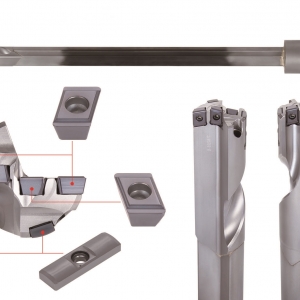
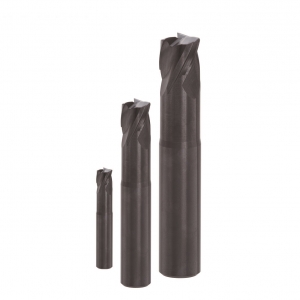
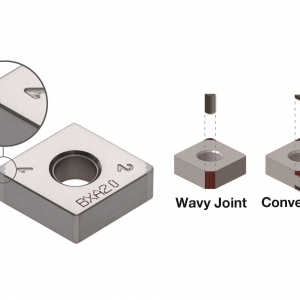
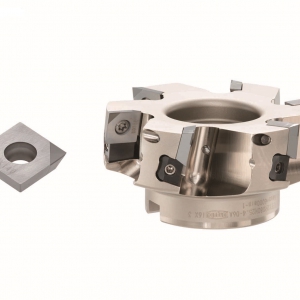
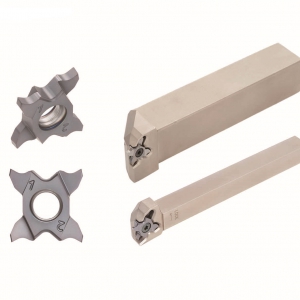

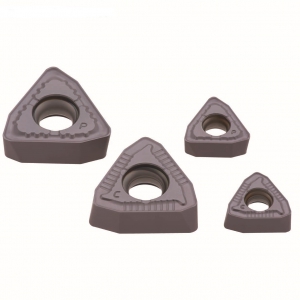
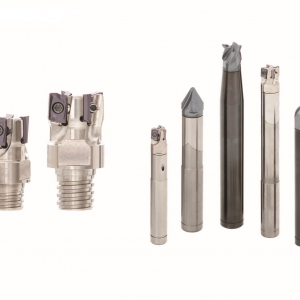

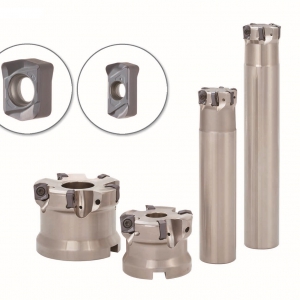
 PRODUCTS
PRODUCTS

